Have You Experienced This? 0

This past June we saw many graduation celebrations in the towns surrounding our main office here in the heart of New England. It began about eighteen years ago for the high school seniors and who knows how many years for the college grads. (See Undergraduate Catagory below.) It seems like yesterday that I was in their shoes. Well, maybe the day before yesterday.
The valedictorians and an assortment of college commencement speakers will have shared their words of hope and encouragement to millions of graduates by the end of June across the country. You may have heard one or two of them.
There is one speaker you will not hear at any of these celebratory events this week. But you can here. In fact, I believe anyone can benefit from his enriching words of wisdom. His name is Michael Himes. He was a Professor of Theology at Boston College.
His last lecture prior to retirement at BC was one of the most meaningful, inspirational and compassionate talks I have ever had the pleasure of hearing. I almost think that most traditional commencement speakers could be cancelled and a DVD of his last lecture simply be handed out to all the college graduates. Here is yours. Let me know what you think.
As each spring comes and transitions into summer, I am energized with new life as I see our students conclude one phase of their education and start another. For many teenagers, it may not include college but nonetheless it is a journey toward personal growth and maturity. Hopefully, it will be more than biological maturity but emotional, spiritual and intellectual maturity as well. All of which can come about without the benefit of the college experience.
But if college is the next step, then take full advantage of it. We show students how to evaluate colleges in two important ways. First, how does the freshman class statistical profile fit their profile? By the time the junior year is concluded, a good number of statistical measures can be seen to determine that.
Our students will do their due diligence using the AAA method. That includes seeking out the Common Data Set for each college on their list.
Second, is the college qualified to provide the educational and social experience they are seeking? Do not measure a college by the number of professors with a PhD degree it may have. That does not mean they can teach. For example, look here at a Yale professor introducing his course in finance, Economics 252. By the way, this professor in 2013 won a Nobel prize for Economics. That award is as unmerited as the Nobel Peace prize given to Barrack Obama was. I suggest these are two reasons why our country is such poor shape financially. Graduates are either clueless or have cleverly figured out how to “game” the system.
 If you can, watch his perplexing presentation. What this professor says in the introduction to his course could be said in fifteen minutes. Someone somewhere decided that college, like high school, should be a four-year experience, as a result much of what takes up valuable class time is just inflated fluff. What is taught in four years can be covered more than adequately in three. What do you think?
If you can, watch his perplexing presentation. What this professor says in the introduction to his course could be said in fifteen minutes. Someone somewhere decided that college, like high school, should be a four-year experience, as a result much of what takes up valuable class time is just inflated fluff. What is taught in four years can be covered more than adequately in three. What do you think?
In any case, is the college faculty qualified to teach your child? And, what is it they need to learn? Those are the questions which we can help you answer. Call for a FREE get acquainted conversation. (978) 820-1295 or Zoom.
Five Extraordinary Colleges You Know Very Little About…until now 0
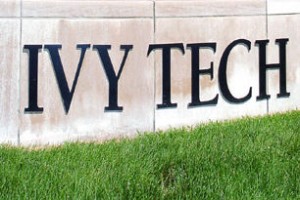 According to the Department of Education, there are 2364 four-year colleges in the United States. Of those, 612 are public colleges. I dare say that about 300 of them would be at least somewhat familiar to about 80% of the public.
According to the Department of Education, there are 2364 four-year colleges in the United States. Of those, 612 are public colleges. I dare say that about 300 of them would be at least somewhat familiar to about 80% of the public.
What about the 2064 unknown colleges. Which of these colleges are worth exploring? When all is said and done, does it matter that much where one goes to college? If you are not looking for a specific program only offered at a particular college, it matters less than you think. What really matters is what you do when you get there.
Some students realize that it might not be a bad idea to look at two-year colleges as well. And some of them are looking at two-year colleges outside of the region in which they live. If there is a community college that is beyond commuting distance but has a specific program you are interested in taking, particularly those with a Phi Theta Kappa Honor Society chapter, you can rent an apartment near the campus. Many colleges such as Greenfield Community College in Massachusetts or the Ivy Tech Community College system in Indiana, can recommend student housing for such students.

Occasionally I like to step back and look at the colleges whose offerings make them stand out. It does not mean they are right for you. But one or more of them could be.
Let me take you on a brief tour of just five of them now.
They are not in any particular order, but # 1 on the list is a two-year college. In fact, this two-year college is tougher to gain admission than is Harvard. Though they are shocked at first, I get a kick out of telling some extremely bright students that they will not have a prayer in being accepted to this college. Here is why.
 1.) Deep Springs College since 1917 accepted only thirteen men into its two-year program each year. That is, until the Class of 2017 applies at which time it may accept female applications. (As of 1/15/17 the decision to accept women has not been made.) It is a rigorous admissions process including several interviews and multiple essays. (The average applicant’s SAT score is 1450.) It is a working cattle and alfalfa ranch but one with a rigorous liberal arts curriculum in the High Desert region of Southern California.
1.) Deep Springs College since 1917 accepted only thirteen men into its two-year program each year. That is, until the Class of 2017 applies at which time it may accept female applications. (As of 1/15/17 the decision to accept women has not been made.) It is a rigorous admissions process including several interviews and multiple essays. (The average applicant’s SAT score is 1450.) It is a working cattle and alfalfa ranch but one with a rigorous liberal arts curriculum in the High Desert region of Southern California.
I have worked with two students in years past who earned their Associate of Arts degree there when it was all-male…until 2018! Yes, young women can now apply to a college where only an AA degree is earned and many applicants, who were also accepted to Ivies, Stanford, and the like, choose to spend two full years in the high desert herding cattle, driving farm tractors, washing dishes and learning how to think critically by means of a very deep academic curriculum from top-flight professors who love to teach there. I have two videos on this page. Be sure to watch this one and the one below.
It was founded by an early California pioneer, LL Nunn in 1917 on his idea that the three pillars… academics, labor, and self-governance help young men prepare themselves for lives of service to humanity. The school’s 26 students, along with its staff and faculty, form a close community. The college operates on the belief that manual labor and political deliberation are integral parts of a comprehensive liberal arts education.
Plus, it is FREE. Each student attends for two years and receives a full scholarship valued at over $50,000 per year. Afterward, most earn their undergraduate and graduate degrees at the world’s most prestigious four-year institutions. It is practically a slam dunk admission transition. Getting a first-class education, and saving up to $110,000 in the process is not a bad way to spend and invest in two years.
Now you know why I can no longer say to some students that they will not have a prayer to being admitted. One intellectually curious young woman I shared this fact with in 1998, was undeterred. Because her goal is to become a college English professor, she saw that as way to be part of the Deep Springs community. (Professors from schools like Stanford, Harvard, and Yale go there to teach periodically for a semester or two.)
Therefore, if you are a male, or female, and intrigued by the concept, why not take 30-minute look at a college like no other.
 2.) Another college that is respected for its philosophy of combining work with learning is The College of the Ozarks. COFO is committed to a five-fold mission of encouraging academic, Christian, cultural, vocational, and patriotic growth in its students.
2.) Another college that is respected for its philosophy of combining work with learning is The College of the Ozarks. COFO is committed to a five-fold mission of encouraging academic, Christian, cultural, vocational, and patriotic growth in its students.
All full-time students work rather than pay for their tuition. The college discourages debt and, like Hillsdale College, does not participate in any government loan programs. On the other hand COFO does participate in federal grant programs so the FAFSA will need to be filed, to determine eligibility. (Hillsdale does not use the FAFSA.)
Academic offerings are surprisingly broad as you can see here. This combined with the strong work program makes it a valuable experience and excellent preparation for a fulfilling life.
By the way, College of the Ozarks has been named a Stone-Cold Sober School by the Princeton Review for ten consecutive years. Alcohol and drugs are strictly prohibited on and off-campus. Therefore, a student who applies to the school with the nickname Hard Work U. and looks forward to spring breaks in Cancun is unlikely to be a good fit for this college.
RATIO ~ SCHMATIO 0
RATIO, SCHMATIO
By SAMANTHA STAINBURN (Former managing editor of Teacher Magazine)
ISABELLE CARBONELL, a college senior from Bethesda, Md., has thrived over the last four years as part of a small learning community. Most of her classes have had fewer than 35 students. For freshman and sophomore years, her dormitory was in the same building as the cafeteria and many of her classrooms and professor’s offices. You see the same people over and over, and that lets you create networks, she says. You get to know your professors informally. You see them in the hallway, they say, How that project going along and you bounce ideas off them. Prospective undergraduates are deluged with statistics from average class size to the number of Nobel Prize winners on staff with which to take the measure of a college. Is Ms. Carbonella’s story an argument for choosing your college by the numbers?
Not exactly. She attends the University of Michigan at Ann Arbor, which has some 25,000 undergraduates, 4,100 full-time faculty members and 540 buildings. If she had been looking for an intimate experience, the numbers would have led her elsewhere.
That’s just one of the problems with statistics: they rarely tell the whole story. (Ms. Carbone’s story is that she signed up for Michigan’s Residential College, a program in which students live and attend classes in the same building. She now lives off campus but continues to take classes in the R.C. building.)
Another problem with numbers: Often statistics don’t measure what’s important, says Lloyd Thacker, executive director of the Education Conservancy, a nonprofit group working to improve the college admissions process. For example, the selectivity of a college, measured by how many applicants it denies, provides little information about the educational experience there. Read more »
Now What? 0
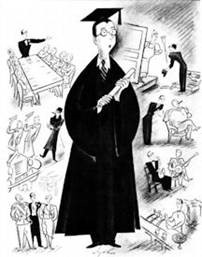 Now What? That is the title of a book by Ari King, in 2009 he was an unemployed graduate of Wesleyan University with a $180,000 degree in Italian Studies. He spent the summer after graduation at his home in California thinking about what to do with his life. At summer’s end, with no job prospects, he headed to New York City thinking his opportunities would be better in a town with 8.4 million people.
Now What? That is the title of a book by Ari King, in 2009 he was an unemployed graduate of Wesleyan University with a $180,000 degree in Italian Studies. He spent the summer after graduation at his home in California thinking about what to do with his life. At summer’s end, with no job prospects, he headed to New York City thinking his opportunities would be better in a town with 8.4 million people.
A friend who was a senior at NYU offered him a place to stay with his five roommates. It was deja vu all over again, but now with six roommates, not one. Sleeping bags come in handy in the city when there isn’t a couch available.
Each day he would scour Craigslist and elsewhere, looking for jobs under every category from ˜Government” and ˜Education” to ˜Russian speaking Nanny” to ˜Security Guard”. He grew increasingly frustrated, with a gnawing feeling of defeat and anxiety. Even hospitality jobs, where a decent income from tips could be quite good, were scarce. Once a person landed such a job, they didn’t leave. With the unprosecuted malfeasance on Wall Street, everyone was playing it safe.
His real world wake-up call reaffirmed what I have been seeing for the last 25 years. Too many colleges, for one reason or another, do not prepare their students to bridge the gap from college to the real world very effectively. Of course, we cannot put the blame entirely on colleges. That is why I tell high school students that it is their responsibility to thoroughly research the advising and career services of the colleges they are considering. It is the all-important third A in the AAA process. Plus, they must become a familiar face and known to the personnel in the career services offices no later than the second semester of freshman year. After all, what is college for?
Now, because of the latest pandemic (remember this one?) many people are unemployed or underemployed, not just recent college graduates. What does one do when one can’t get a job? Some may say, keep looking; don’t quit! Easy for them to say. But there is one thing that many bright people with initiative (college degree or not) are realizing; that if you can’t find a job or don’t like the one you have, create one!
But first, you have to look within yourself and identify honestly what you are good at. Ask yourself if you can use that natural strength to not only meet a need that people have but will pay you to fill it. For instance, Ari King enjoyed writing and his teachers recognized he had a flair for writing. He looked around his world. Why not write a guidebook that will help college students prepare for life after college? He did not see many that addressed the issue. He thought “Would people be interested?” The answer, judging by these Amazon reviews, is yes!
While reading his book I was amazed at the majority of college graduates he interviewed who went to college with little thought put into how they were going to live and pay bills after college. Each graduate was asked what regrets he or she had and what could have been done differently. The majority said they did not use the career services office early enough (or at all) to find internships. No wonder so many were jobless upon graduation or working in jobs that a high school graduate would be qualified to do.
little thought put into how they were going to live and pay bills after college. Each graduate was asked what regrets he or she had and what could have been done differently. The majority said they did not use the career services office early enough (or at all) to find internships. No wonder so many were jobless upon graduation or working in jobs that a high school graduate would be qualified to do.
I recommend the book Now What? and encourage all students thinking about college or in college now to read it this summer before they realize that the years in college are a waste of time and money. Contact us if you REALLY want to make sure college is a good investment as well as learn how to keep yourself healthy during these challenging times…and beyond!
It’s Not Just About Getting In 0
 By now, millions of high school seniors across the country have received the news from their colleges. We wish them all the best of success. Spring always brings some surprises, both good and not so good. This year was another tough year. Hopefully, the final decisions that each of them made by May 1 have been carefully thought through.
By now, millions of high school seniors across the country have received the news from their colleges. We wish them all the best of success. Spring always brings some surprises, both good and not so good. This year was another tough year. Hopefully, the final decisions that each of them made by May 1 have been carefully thought through.
Now, seniors will be looking forward to proms, accepted college days at their respective campuses and finals, well, maybe not finals. One of the many questions they will be asked at points along the way and while in college will also be a question that has become harder for students to answer.
It is what do you plan to major in?  For the thousands of students who have not seriously researched the options while in high school (as we advise students) will likely be overwhelmed by the choices, particularly at a university where the choices are ever increasing. Colleges and universities reported nearly 1,650 academic programs to the Department of Education in 2015; 355 were added to the list over the previous 15 years as colleges, to stay competitive and current, adopted new disciplines like forensic psychology, global studies, cyber-forensics and agroecology and all kinds of health sciences disciplines, including Adventure Education and Leadership.
For the thousands of students who have not seriously researched the options while in high school (as we advise students) will likely be overwhelmed by the choices, particularly at a university where the choices are ever increasing. Colleges and universities reported nearly 1,650 academic programs to the Department of Education in 2015; 355 were added to the list over the previous 15 years as colleges, to stay competitive and current, adopted new disciplines like forensic psychology, global studies, cyber-forensics and agroecology and all kinds of health sciences disciplines, including Adventure Education and Leadership.
Graduating with a double (or triple) major, minor or concentration as a way to hedge bets in an uncertain job market has become increasingly popular; the number of bachelors degrees awarded to double majors rose 70 percent between 2001 and 2014, according to the DOE.
Is Getting Into College Easier? 0
Is Getting Into College Easier?
You may have read or heard about how the number of applications have spiked at so-called prestigious colleges around the country. That triggers fear in many households with college bound students. Fear is an often-used emotion to control the actions of people as to what to do (or not do) going forward. Some observers of the college selection process say it is actually easier to get into colleges (even the more competitive ones) than in previous years. Really?
They say that many students do not realize that getting into a good college today is a lot easier, and will become even more so in the coming years. That is the case, according to the Hechinger Report. The writers of the report say it is important to let go of the “fear” mindset because they claim it is one of the reasons why students do not bother to apply to more competitive colleges. Instead, they settle for lower quality schools, when they could have been accepted to much better institutions.
Actually, that is not the case with the students we have been guiding over the last 25 years. They are very much focused on the most competitive colleges, often too much so. When their college list begins to take shape, they are often doing it the wrong way from the top down, rather than the bottom up.
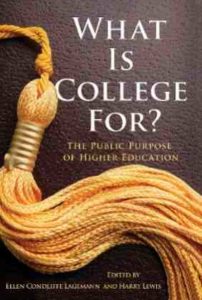 If the reader has college aspirations, you must first think about what is college for and why it is the logical next step for YOU? Though it may become easier to get accepted to college, the same due diligence in finding the colleges best qualified to help you reach your goals is just as important as always. Therefore, even though many colleges and universities may not be that selective, don’t neglect taking the steps that will help you determine if the college to which you apply is qualified to help you reach your goals.
If the reader has college aspirations, you must first think about what is college for and why it is the logical next step for YOU? Though it may become easier to get accepted to college, the same due diligence in finding the colleges best qualified to help you reach your goals is just as important as always. Therefore, even though many colleges and universities may not be that selective, don’t neglect taking the steps that will help you determine if the college to which you apply is qualified to help you reach your goals.
By the way, don’t fall for the well-meaning but misinformed guidance of colleges and some counselors that tell you “Don’t worry about what you want to major in or do for a career. You will have plenty of time to figure that out in college”. If you believe that, read this now.
Yes, it may be easier to get into college in the coming years as there will fewer high school graduates until 2023. We are already seeing college Enrollment Managers conceive ways to not only “fill seats” but with the most revenue/per seat. 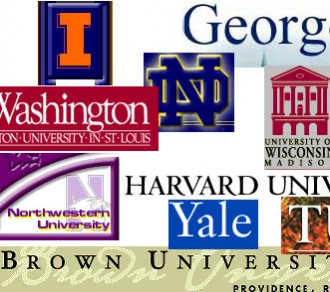 Many colleges and universities will be increasing their marketing efforts to attract these students. Families might get to finally have (dare I say) the negotiating power. That’s because these institutions compete with each other when it comes to the record number of applicants. You may already have seen how colleges encourage everyone to apply without regard to their qualifications. The more applications they get, the more they can reject, thus moving up in the rankings.
Many colleges and universities will be increasing their marketing efforts to attract these students. Families might get to finally have (dare I say) the negotiating power. That’s because these institutions compete with each other when it comes to the record number of applicants. You may already have seen how colleges encourage everyone to apply without regard to their qualifications. The more applications they get, the more they can reject, thus moving up in the rankings.
The National Student Clearinghouse Research Center‘s said that there’s actually going to be more colleges looking for students, so getting into college is not something students should be worried about. But what I say is, they should be worried about how they are going to pay for it. For that and other answers to your questions, call us.
Welcome! 0
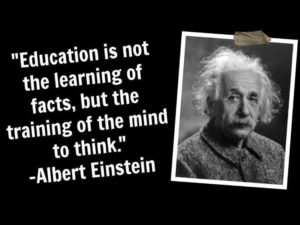 Einstein has been credited to have said “You cannot solve a problem with the same thinking that created the problem.” The origin of this very interesting statement doesn’t matter. What matters is that too many students, through no fault of their own, are not learning how to think critically even in college.
Einstein has been credited to have said “You cannot solve a problem with the same thinking that created the problem.” The origin of this very interesting statement doesn’t matter. What matters is that too many students, through no fault of their own, are not learning how to think critically even in college.
If there is a consensus that there is a problem it may be that though high schools and colleges say they teach students critical thinking skills, they may not be. Admittedly, it is not easy. Teachers have definitive guidelines to follow and tasks that sometimes have nothing to do with teaching cognitive skills and students have deadlines and diversions that often do not allow time to spend on things they don’t immediately see as important. We have ALL been there, haven’t we?
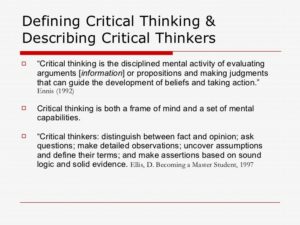 John Schlueter, a former journalist for Inside Higher Education, once pointed out that even though higher education has placed a great emphasis on critical thinking, no evidence suggests that such skills can even be taught. Critical thinking is a learned ability that MUST be taught. “If we realize that ‘critical thinking’ implies a set of general thinking skills that transfer from one subject or domain to another, then the task of identifying exactly what those skills are becomes extremely difficult, and perhaps impossible, to accomplish.”
John Schlueter, a former journalist for Inside Higher Education, once pointed out that even though higher education has placed a great emphasis on critical thinking, no evidence suggests that such skills can even be taught. Critical thinking is a learned ability that MUST be taught. “If we realize that ‘critical thinking’ implies a set of general thinking skills that transfer from one subject or domain to another, then the task of identifying exactly what those skills are becomes extremely difficult, and perhaps impossible, to accomplish.”
He points to research demonstrating that critical thinking only exists within the context that it is being taught, meaning that critical-thinking skills are rarely applicable across disciplines. Students must gain an exceptional amount of knowledge in a certain area before they can apply what they have learned to other fields of study.
I agree. I also believe that instructors must gain a deeper understanding of how they approach thinking within their own disciplines to help students develop better cognitive skills. However, many of them are entering the teaching profession without being taught the basics of how to think critically.
In every personal college and career planning binder, we prepare for our students,  we include a 13-page transcript of a college professor’s lecture he gave to over 350 other college professors, titled An Introduction to Critical Thinking. The reader can download it above to read and save for reference or in my essay Houston, we have a Problem The professor points out that while professors presumably have the ability to think critically because they had to learn such a skill to earn advanced degrees in their respective disciplines, many students never develop critical thinking skills. Why not?
we include a 13-page transcript of a college professor’s lecture he gave to over 350 other college professors, titled An Introduction to Critical Thinking. The reader can download it above to read and save for reference or in my essay Houston, we have a Problem The professor points out that while professors presumably have the ability to think critically because they had to learn such a skill to earn advanced degrees in their respective disciplines, many students never develop critical thinking skills. Why not?
 I believe the problem lies in that students are told “what to think,” not how to think. Many students find that learning the subject matter alone is so overwhelming that they have time for little else. Tests that are given do not measure a student’s critical thinking skills. Tests demonstrate the student’s ability to remember, dates, names, places, formulas, etc., etc., and have little to do with critical thinking.
I believe the problem lies in that students are told “what to think,” not how to think. Many students find that learning the subject matter alone is so overwhelming that they have time for little else. Tests that are given do not measure a student’s critical thinking skills. Tests demonstrate the student’s ability to remember, dates, names, places, formulas, etc., etc., and have little to do with critical thinking.
In 2009, I wrote about the Collegiate Learning Assessment. It was introduced in 2000. The purpose of the CLA was to measure and test college graduates’ critical thinking, analytic reasoning, problem-solving, and written communication skills. Since colleges’ participation was voluntary, and the results are not published it has served little purpose to the parents who are paying for most of the costs of college, now the student who wants to get the best return on investment. By the year 2011, the authors of the book Academically Adrift have determined that there is limited learning on college campuses.
This is why at Programs for Education, we encourage our students to understand what critical thinking REALLY means and understand what their natural and lifelong innate personalities and characteristics are to help them research and plan life beyond high school. Is college the next step or not? There are thousands of people who have accomplished success (what does success mean to you?) without a college degree. But if college is the next step, the buyer needs to know how to research the “product” beyond the rankings of colleges in US News & World Reports, et al.
REMINDER: If you are looking for something specific on our website, simply type in a KEYWORD into “Search”  e.g. Admissions, Scholarships, SAT, Advising, Drugs, JFK, Essays, Education, Major, Job, and so on. This will bring up all the articles related to that topic. Much of that information here will be helpful in your college planning depending upon your year of graduation.
e.g. Admissions, Scholarships, SAT, Advising, Drugs, JFK, Essays, Education, Major, Job, and so on. This will bring up all the articles related to that topic. Much of that information here will be helpful in your college planning depending upon your year of graduation.
Plus! Get your questions answered immediately on all college-related topics.  Some information, admissions, and financial aid tips we have for you here, you will not find anywhere else. Plus, if you are concerned about how to pay for college, we can show you how to pay for college from CASH FLOW ALONE. (See the last paragraph on that page.) Hundreds of parents have implemented this system and are not borrowing a nickel OR drawing down from savings. It is absolutely BRILLIANT!
Some information, admissions, and financial aid tips we have for you here, you will not find anywhere else. Plus, if you are concerned about how to pay for college, we can show you how to pay for college from CASH FLOW ALONE. (See the last paragraph on that page.) Hundreds of parents have implemented this system and are not borrowing a nickel OR drawing down from savings. It is absolutely BRILLIANT!
We offer to high school students and parents a FREE ‘get acquainted’ 75′ consultation online via ZOOM, phone, or in person, please call Eric Goodhart at 1 (978) 820-1295 or email using the ‘Contact Us’ link here.
“Exercising democracy between wars is like being a vegetarian between meals.”
It’s Not Just About Getting In 0
 Some students go to college knowing exactly what they want to do. But most don’t. At large state universities, it is not uncommon that over 75% percent of freshmen, even those who have declared a major, say they are uncertain about their major, and half will change their minds after they declare, sometimes more than once. That is one big reason that only 37% of students graduate in four years.
Some students go to college knowing exactly what they want to do. But most don’t. At large state universities, it is not uncommon that over 75% percent of freshmen, even those who have declared a major, say they are uncertain about their major, and half will change their minds after they declare, sometimes more than once. That is one big reason that only 37% of students graduate in four years.
Colleges and universities have vested interests in students declaring early. Retention rates for declared students are better, and they are more likely to graduate in four years. But college officials also recognize that deciding on a major can be overwhelming, especially when coupled with the fear that a wrong choice will result in added semesters and tuition. Especially when coupled with the fear that a wrong choice will result in added semesters and tuition. Students no longer have the luxury of stumbling into a major or making mistakes, not that they ever did.
This requires thinking ahead. Teenagers are not expected to know what to do with the rest of their lives at age 18,  but with coaching, they can cover the bases with prudent planning. Some majors have a curriculum that follows a tight sequence of courses. It’s easier to switch out of engineering than it is to take it up later in the college career.
but with coaching, they can cover the bases with prudent planning. Some majors have a curriculum that follows a tight sequence of courses. It’s easier to switch out of engineering than it is to take it up later in the college career.
The biggest mistake students make is failing to research what’s required of the major, and the profession. Nursing may sound attractive because a student wants to help people, but nursing students take the same demanding math and science curriculum as premed students, and the work is often technical and not for every kindhearted soul. It is also a similar track with Physical Therapy.
More niche filling additions to the list obviously reflect marketplace trends and student demand, like culinary science/culinology, digital arts, and sports communication. At Montclair State University in New Jersey, which offers 300 majors, minors and concentrations, new fashion studies major has been hugely popular, thanks to the university’s proximity to Manhattan; with Madison Square Garden and Giants Stadium in sight. It also guides the ambitious undergrad toward internship opportunities in a sports industry and event-planning major within its business school.
 Still, it’s difficult to predict the employment market. That is why I will encourage students to think outside the box. In other words, if the job doesn’t exist…create one. Many students choose majors they think will lead to jobs, but four years from now freshmen will be applying for jobs that don’t even exist today.
Still, it’s difficult to predict the employment market. That is why I will encourage students to think outside the box. In other words, if the job doesn’t exist…create one. Many students choose majors they think will lead to jobs, but four years from now freshmen will be applying for jobs that don’t even exist today.
Most employers are looking for transferable skills the ability to problem solve, work collaboratively, write and speak clearly and think critically. These can be developed in any liberal arts discipline. It makes no sense to suffer through a major because you think it will lead to employment.
In the final analysis, wherever a teenager goes and does after high school, which I call Crossing the Gap Preparing for the Transition, where they go does not matter as much as what they do when they got there.
The late great business philosopher, Jim Rohn, said this “A formal education will make you a living, but self-education will make you a fortune!” These two college graduates understood that. You can too! 1 (978) 820-1295
Latest News 0
Spring Into Action!
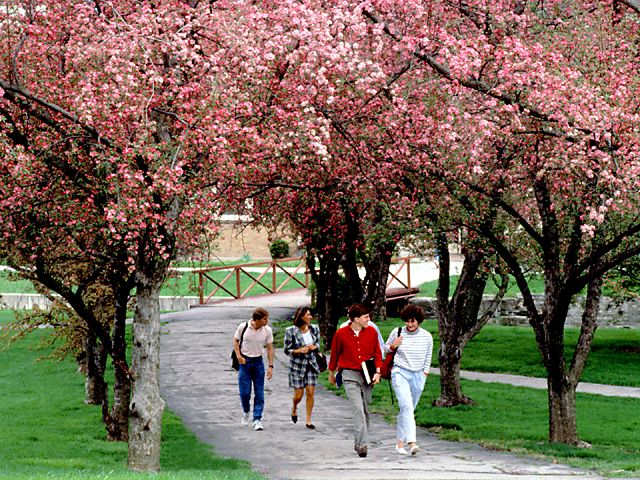 We are told that March 20th is the first day of spring. Can you smell the flowers yet? Our students in California, particularly the ones who have never experienced snow beyond Big Bear or Yosemite may not understand why we live in New England. For myself, I love the history of the region and the beauty each season offers. Experiencing the changing seasons is like living in four places without moving. There is always something to look forward to and seeing things with a fresh perspective.
We are told that March 20th is the first day of spring. Can you smell the flowers yet? Our students in California, particularly the ones who have never experienced snow beyond Big Bear or Yosemite may not understand why we live in New England. For myself, I love the history of the region and the beauty each season offers. Experiencing the changing seasons is like living in four places without moving. There is always something to look forward to and seeing things with a fresh perspective.
Speaking of looking forward, many highs school seniors are waiting to hear from the colleges to which they applied. If they have followed the steps we have laid out for them, they will hopefully get the news they are hoping for and will decide by May 1 which college they will attend. But if they are put on the dreaded waitlist at their first choice colleges they will need to adjust and consider their options.
Meanwhile, current juniors and sophomores should be looking at the steps they need to be taking if they too have college aspirations. One is to take advantage of college visits while students are still on campus and attending college fairs that will be at cities around the country starting in May and continuing through the fall of the year. 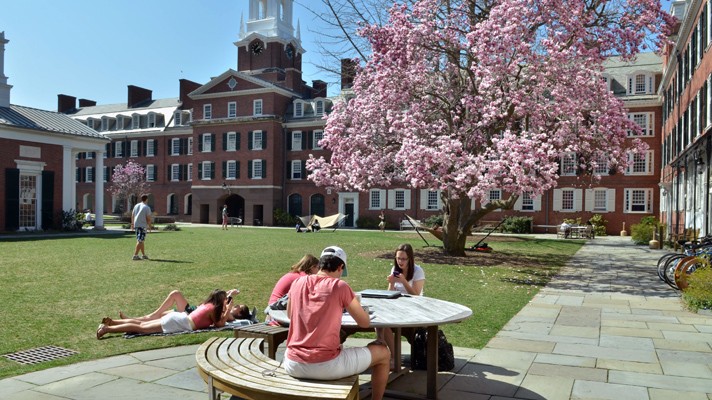
If you are a client with whom we have not had a winter/spring review as of yet, call us today to arrange a good time for your update review. If you are just beginning the process of preparing a realistic college list and would like some suggestions. Call us for a “get acquainted” no obligation consultation; plan on 75’ for that conversation. It does not matter where you live. We are presently working with students in Shanghai, China and Stuttgart, Germany.
The Canadian Option 0
The Canadian Option
 In recent years, I have written about extraordinary colleges that students know little or nothing about, but should. All but one of those colleges are in the United States. Now I want to discuss higher education opportunities that are north of the border. Have you ever considered the Canadian option? Why not?
In recent years, I have written about extraordinary colleges that students know little or nothing about, but should. All but one of those colleges are in the United States. Now I want to discuss higher education opportunities that are north of the border. Have you ever considered the Canadian option? Why not?
Here are a few reasons why you may want to:
- The quality of education and living standards in Canada are amongst the highest in the world, but the cost of living and tuition fees are generally lower than comparable college costs in the United States. At the time of this writing, $1.00 US equals $1.33 CA. Therefore, the University of Toronto’s cost of attendance (COA) for non-residents is $46,530 (CA) but $35,363 (US). A comparable American university is $65,750. Most of the Canadian universities accept the US Federal loan programs, including the PLUS loan. But they do not accept US Pell or SEOG grants. From an affordability standpoint, this could make the Canadian option impractical because there is little need-based grant aid given to American students to fill the gap.
- There are around 100 major universities in Canada and 95% are publicly supported. There is a high level of respect given to secondary school teachers across the provinces and most students take their lessons seriously and some observers believe they are better prepared for college than their American counterparts. This translates
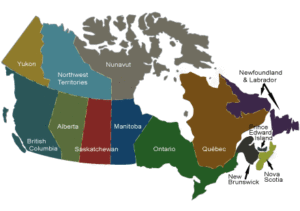 into a positive peer environment for the mature teenager from the US who is going to college, not because it is the thing to do but to pursue an academic concentration that will prepare them for life beyond college. Learning does not stop after the degree is earned. It is a lifelong activity.
into a positive peer environment for the mature teenager from the US who is going to college, not because it is the thing to do but to pursue an academic concentration that will prepare them for life beyond college. Learning does not stop after the degree is earned. It is a lifelong activity.
- Canada’s high academic standards and rigorous quality controls mean that there is more likelihood of earning a high-quality education that will open doors for your future and benefit your career over the long term. You want to be prepared. A Canadian degree, diploma, or certificate is globally recognized as being equivalent to those obtained from the United States. There are also more CO-OP programs offered than in the US as well as accelerated three-year Bachelors’s degree options. (Keep in mind, however, that if a US graduate degree is pursued, the 3-year degree may not satisfy requirements for some US graduate programs.) Here is the latest ranking of the top Canadian colleges and universities. Now, settle back; grab a hot chocolate and take a virtual tour of them all.
- Study abroad opportunities abound in US colleges. I encourage students to take a semester in another country if it includes taking classes in a university while there. But how about all four years in the foreign country above instead of abroad? With almost all of the world’s ethnic groups represented in Canada, it’s hard not to find ethnic foods and recreation activities associated with specific cultures. Canada has long had a welcome mat out to immigrants from other cultures. They have excellent

screening procedures, but there is little of the fear of “aliens that has been instilled into the US population.
- You may have heard of or experienced Canadians friendly and open nature. During all my visits to Canada, I experienced that friendliness. In fact, the United Nations consistently ranks Canada as one of the best places in the world to live. As an international student in Canada, you’ll enjoy all of the same freedoms which protect Canadians, respect for human rights, equality, and a stable and peaceful society.
By now you may be asking “This looks great but what are my chances of getting in and how complex is the application process?”
Each university has its own application but it is much more straightforward than the Common Application, which only three private schools in Canada accept, by the way. You will need to do your AAA due diligence as you should be doing already. Keep in mind, however, that the admissions person you would have contact with is the International Counselor, not a regional counselor that you will find in private American schools.
Dan Seneker, Student Recruitment Manager at the University of Saskatchewan list the application steps here. Plus a plethora of information and eye-opening statistics here. Finally, here is a link that encapsulates the differences between American and Canadian universities.


